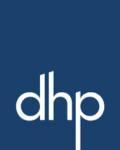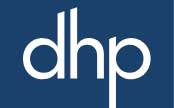In this post we’ll be looking at forecasting. We’re not talking about big three-year financial forecasts. We’re talking about operational forecasting. We’re talking about understanding what’s coming up in terms of workforce demand, because whether that’s the next six weeks or the next six months, forecasting is key to ensuring consistent service delivery for your customers.
A business delivering competitive advantage will have an excellent operation with the skills, knowledge and the discipline to be able to add value for commercial gain whilst delivering exceptional customer experience – forecasting is a critical component in achieving this.
If you’re not producing regular forecasts, your operation will most likely be in a reactive position with a continual short-term outlook. It’s likely you’ll be facing sudden and varied challenges as demand for work fluctuates, and you may find the operational journey ahead challenging, with a fair degree of pain and frustration along the way.
What do we mean by forecasting?
Forecasting is about the control and marshalling of resources within your operation. Forecasting enables managers to develop meaningful plans and so reduce the level of uncertainty and negative impact around future demand . Managers need to match workload demand with supply of skilled resources, so it’s essential for them to have accurate insight. Forecasting is a critical component of an effective, cost-efficient and customer focused operation.

Under and over resourced
Demand needs to be understood at the true end to end process levels and the activities that it consists of at a granular level based on task level received volumes. Then be clear on the drivers, what is really causing your demand to arrive. Then its clarity and control of resources. This typically manifests itself as a disparity between teams in terms of their resourcing. We’ve seen teams with ten people doing two people’s work, while next door there’s a team of three struggling with the workload of eight.
Implementing forecasting in your operation
The old adage of the right tool for the right job is very apt. For effective forecasting, you need a powerful and flexible software tool which forms the data foundation of your operational decision-making. You need a software system that enables you to build forecasting models based on historical data, and to develop longer range forecasts to allocate resource in line with projected new business volumes. You need to be able to heat map to quickly identify resourcing issues and re-allocate for the short term. These are just some of the features you should be looking for in a forecasting software solution.
However, before implementing a new software solution you must first understand your operation and your teams. Gaining clarity on resourcing and processes is essential if you’re to customise software so that it fits neatly into your operation. For effective forecasting, you can’t just have any old tool – you need the right tool with ownership held with the team managers who should be undertaking this activity and reporting so the senior management team have transparency.

If you want to achieve operational excellence, software should be the final piece in the jigsaw
To forecast effectively, you must be in control of your operation, and that’s exactly where you must start. Analyse how work comes in, how it’s measured, and how it’s completed . Explore how resources are aligned with demand, and gain clarity of the fundamental drivers and levers within your operation. Only when you understand all this, can you successfully implement a software system that will produce accurate, consistent forecasts that give you the confidence to make sound decisions. Software is a critical part of the solution, but is not a solution by itself. Be wary of providers who promise that a piece of technology on its own is the solution to your forecasting challenges.
The big picture
Most CEOs will be accustomed to forecasting around growth and profitability. Yet these financial forecasts need to be underpinned by operational forecasts, otherwise you won’t know whether you have the operational capacity to deliver your financial goals. So operational forecasting plays a key part in supporting a business’ financial goals as well as providing increased confidence that your operation can support your ambition.
Focus on the sat nav, not the rear view mirror
If you’re driving along the road to growth and profitability, you need to be clear on the route you’re taking, and totally focused on the road ahead. For most of us, sat navs have simplified journeys enormously. They re-plan our route if we make a wrong turn, they provide updates on traffic hotspots and they let us know the fastest route to our destination.
Forecasting is your business’s sat nav – planning the best route, providing a timely warning of any obstacles ahead, and giving you the flexibility to quickly and efficiently change your route if you’re objective shifts. Yet to be certain that the route you’re taking is the right one, you need to take a more holistic approach by ensuring that your financial forecast is underpinned by your operational forecast.



